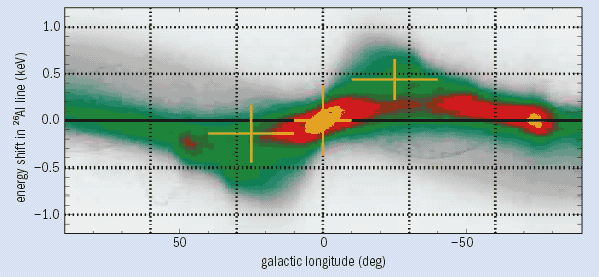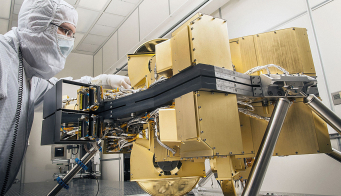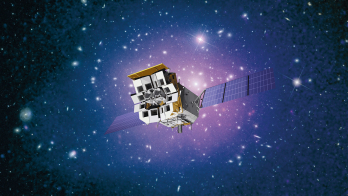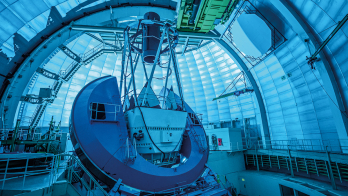One supernova explosion every 50 years in our galaxy: that is the rate that a European team has determined from the observations of ESA’s INTEGRAL gamma-ray satellite. This figure is based on the amount of gamma-ray radiation emitted by radioactive aluminium produced in core-collapse supernovae.

With a lifetime of about a million years, radioactive aluminium (26Al) is an ideal tracer of ongoing nucleosynthesis in the galaxy. The decay of 26Al emits a gamma-ray line at an energy of 1.809 MeV. NASA’s Compton Gamma-Ray Observatory found in the 1990s that this characteristic emission is distributed along the plane of the Milky Way, as expected if 26Al is mainly produced by massive stars throughout the galaxy. It remained unclear, however, whether the dominant emission towards the centre of the galaxy was due to relatively nearby star-forming regions on the line-of-sight or to the central region itself.
It is this uncertainty that has now been lifted thanks to INTEGRAL’s very high spectral resolution. The peak of the emission from 26Al was found to be shifted towards higher energies east of the galactic centre and towards lower energies on the west side. These observations are consistent with the expected Doppler shift due to the rotation of the galaxy. They show that the 26Al emission does follow the global galactic rotation and hence comes from the inner part of the galaxy rather than from foreground regions.
The team, led by Roland Diehl of the Max Planck Institute for Extraterrestrial Physics in Garching, Germany, used these line-shift measurements to constrain the best model for the spatial distribution of 26Al in the galaxy. This distribution was then used to convert the observed gamma-ray flux into the total mass of 26Al in the Milky Way, which was found to be about three times the mass of the sun. Finally, using results from theoretical nucleosynthesis models for a typical stellar population, the team could estimate the current star-formation rate in the galaxy to be about 7.5 stars a year, corresponding to a rate of core-collapse supernovae of 1.9 (±1.1) events a century.
The rate of two supernovae a century in the Milky Way is consistent with the rate derived from supernovae detected in other galaxies, but exceeds several times the rate deduced from the historic observations of supernova explosions during the past 2000 years. Only eight such events have been recorded – in 185, 386, 393, 1006, 1054, 1181, 1572 and 1604 – mainly by Chinese astronomers. The two last events have been observed more precisely by the famous European astronomers Tycho Brahe (1546-1601) and Johannes Kepler (1571-1630). If we exclude the supernova of 1987 in the Large Magellanic Cloud, no supernova has been seen in the galaxy during the past 400 years. Some events may have gone unnoticed because they were distant and heavily obscured by interstellar dust, but the next supernova in the galaxy will certainly not remain hidden now we can observe the sky as never before throughout the whole electromagnetic spectrum, and even with neutrinos.
Further reading
R Diehl et al. 2006 Nature 439 45.
Shifts in the gamma-ray line from 26Al caused by the Doppler effect along the plane of the galaxy, owing to galactic rotation. The broad distribution is from a three-dimensional model of the spatial distribution of 26Al – based on free electrons in the interstellar medium – that matches the line shifts measured by INTEGRAL (error bars). (Courtesy MPE.)








31 Comments